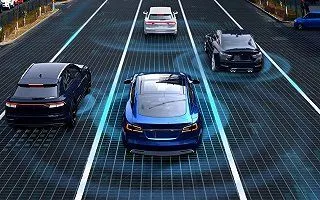来源:钛媒体
TMTPOST--Many merchants in Menghe Town, China, never anticipated that they could directly sell auto and motorcycle parts to overseas consumers. "We didn't expect the strong demand from international buyers," said Chao Kang, the Secretary of Lingyue Equipment Co., Ltd., a company specializing in auto parts manufacturing.
Initially, like most foreign trade products, auto parts exports followed the traditional B2B model. Lingyue Equipment started this way as well. However, in 2014, the company became one of the early adopters of online exports in Changzhou's Menghe Town.
They opened their first eBay account, selling motorcycle parts directly to U.S. consumers—a move that exceeded expectations in terms of sales performance. By the end of the year, Lingyue Equipment expanded into the auto parts sector and diversified its online channels. Today, more than 90% of the company's revenue comes from cross-border e-commerce platforms.
"Online platforms provide immediate insight into market demand," said Ye Junhong, head of Dachen Optoelectronics. His company initially produced engine components but shifted to more universal products like car lights and exterior parts as the electric vehicle market grew.
In 2014, Song Lei, who gained knowledge of cross-border e-commerce while studying abroad, founded a company specializing in auto parts. He began selling over 10,000 products across platforms like eBay and Amazon. Song initially didn’t expect this venture to become a high-growth business. But by 2019, his sales on eBay alone had increased sevenfold, and the company continues to maintain a 40% annual growth rate.
The rapid growth of the auto parts cross-border business presents significant opportunities, but it's not an easy venture to manage.
The auto parts export industry has long been an untapped blue ocean market. According to third-party statistics, from January to July 2024, China's auto exports, including chassis, amounted to $65.1 billion, while home appliance exports reached $57.59 billion, and auto parts exports totaled $53.6 billion.
Compared to the high-profile automotive and home appliance industries, the auto parts sector remains fragmented, lacking dominant brands and visibility. It operates in the shadow of the larger automotive industry but offers immense potential, especially in markets like the U.S., where vehicle retention rates are high.
The average use life of car in the U.S. is 12.6 years, and vehicles aged between 6 to 14 years will constitute 40% of the U.S. market in the coming years, creating a $300 billion aftermarket space.
Auto parts are also a "counter-cyclical" industry. In times of global economic slowdown and lowered consumer expectations, the functional demand for "repair and maintain" over buying new cars becomes more prevalent. From January to July 2024, auto export growth slowed from 118.5% to 18.1%, while auto parts exports only declined slightly from 10.1% to 5.6% year-on-year. Despite the slowdown, auto parts exports have shown more resilience than complete vehicles.
As the overall market size of the auto parts industry expands, its online penetration is also growing rapidly.
Consumers are increasingly turning to online platforms for their auto and motorcycle parts purchases. Online prices are often significantly lower, with some exterior parts priced at just 50% of what they cost in brick-and-mortar stores. Furthermore, cross-border e-commerce logistics are improving. According to Kang Yong, Chief Business Officer of Orange Union, their enhanced warehousing and distribution capabilities have raised the same-day delivery rate for auto parts from 50% to 87%, with two-day delivery rates exceeding 95%.
With lower prices and faster delivery, the barriers to online auto parts purchases are diminishing. Data suggests that the global auto parts e-commerce market will reach $120 billion in 2023, with a compound annual growth rate of 10% to 15% over the past six years.
The fragmented nature of the auto parts industry, with tens of thousands of SKUs, also benefits e-commerce. Unlike other categories that compete on a limited number of best-selling products, auto parts sellers can focus on covering a wide range of items, reducing the need for high marketing spend and cutthroat price competition.
Cross-border e-commerce platforms are capitalizing on this blue ocean market, helping Chinese auto parts manufacturers distribute their products worldwide. From early players like eBay, Amazon, and Walmart to Chinese platforms such as AliExpress and Temu, which offer full and semi-managed services, these platforms are actively expanding the reach of Chinese auto parts sellers.
Moreover, the transformation and weakening of traditional auto parts giants have opened up new structural opportunities for Chinese cross-border sellers.
According to eBay's regional director of cross-border trade, Huang Bujin, established brands like Bosch, Denso, Mopar, and Motorcraft have not fully leveraged their offline advantages in this new wave of e-commerce. The U.S. auto parts retail giants are also undergoing changes, with AutoZone, NAPA, and others losing ground, creating room for new entrants.
"The cross-border auto parts industry is highly complex. To succeed, you need to master several key areas," said Song Lei, founder of Yinshi Network Technology in Shanghai.
While the market presents opportunities, not every business will succeed. Cross-border auto parts sellers face three major challenges: product and supply chain management, digital operations, and logistics capabilities.
Product development and supply chain efficiency are critical in the highly competitive auto parts market. Developing new products can be a significant barrier to entry, with high costs, such as the hundreds of thousands of dollars needed for a mold for a headlamp assembly.
Additionally, the complexity of auto parts categories means sellers cannot stock large quantities of every item, requiring a highly responsive supply chain. Fortunately, China has a strong industrial base for auto parts, with regional clusters specializing in various production processes.
For example, Menghe Town, where Lingyue Equipment is based, covers all 12 major categories of auto parts and has core processes like injection molding, sheet metal processing, and machining.
According to Chao, their production capacity meets 50% of overseas customer demand, while the other 50% is fulfilled by integrating the capacities of other local businesses.
Cross-border e-commerce also requires a high level of digital and precision operations. Early on, suitable ERP products were not available to meet the needs of the auto parts industry, so Song Lei developed his own system, becoming an ERP expert in the process. He even helps other businesses set up their ERP platforms.
Another challenge is managing product specifications across different vehicle models, which often leads to mismatches and returns. To address this, eBay developed the MyGarage platform, which provides the most comprehensive vehicle compatibility database, helping sellers accurately match their products to specific models and increase their exposure.
Logistics and warehousing capabilities are also crucial. Due to the non-standard nature and large size of auto parts, transportation and storage costs can be relatively high. According to Kang Yong, logistics costs account for 25% to 45% of a cross-border auto parts company's expenses. Managing these costs effectively is key to maintaining competitive pricing.
"Breaking down logistics costs, international shipping typically accounts for 20% to 25%, while last-mile logistics make up 65% to 70%, and warehousing costs are around 5% to 10%," explained Wang Sijie, Vice President of Wan Yi Tong Group. "Each segment offers opportunities for cost savings. For example, dismantling bumpers can reduce shipping costs by 80% by allowing more units per container. Optimizing the packaging and labeling process can also increase efficiency and reduce costs in warehousing and last-mile delivery."
To succeed in the cross-border auto parts business, companies must enhance their products, digital capabilities, and collaborate effectively with their supply chain partners to optimize the entire industry.
The global auto parts e-commerce market is full of opportunities and is nurturing a new generation of stars in the industry. As the demand for replacement parts moves online, and as the rise of electric and smart vehicles reshapes the market, Chinese sellers are undergoing a period of structural transformation.
"On our platform, we are seeing sellers innovate in several areas," said Lin Wenkui, General Manager of eBay's International Trade Cross-Border Business in China. "First, there is a shift from low-cost, homogenous products to high-quality, customized, and personalized items. Second, we see an upgrade from OEM to self-owned brands. Finally, companies are becoming more proactive in innovation, using social media to tap into new consumer demands."
Auto parts are functional products that require a high level of trust from consumers. Beyond price, Chinese auto parts companies must focus on building trust through product quality, fulfillment efficiency, and after-sales service.
Success in this market will depend on a combination of continuous innovation and strong partnerships with platforms, logistics providers, and other ecosystem players.
特别声明:以上内容仅代表作者本人的观点或立场,不代表新浪财经头条的观点或立场。如因作品内容、版权或其他问题需要与新浪财经头条联系的,请于上述内容发布后的30天内进行。
海量资讯、精准解读,尽在新浪财经APP













发表评论